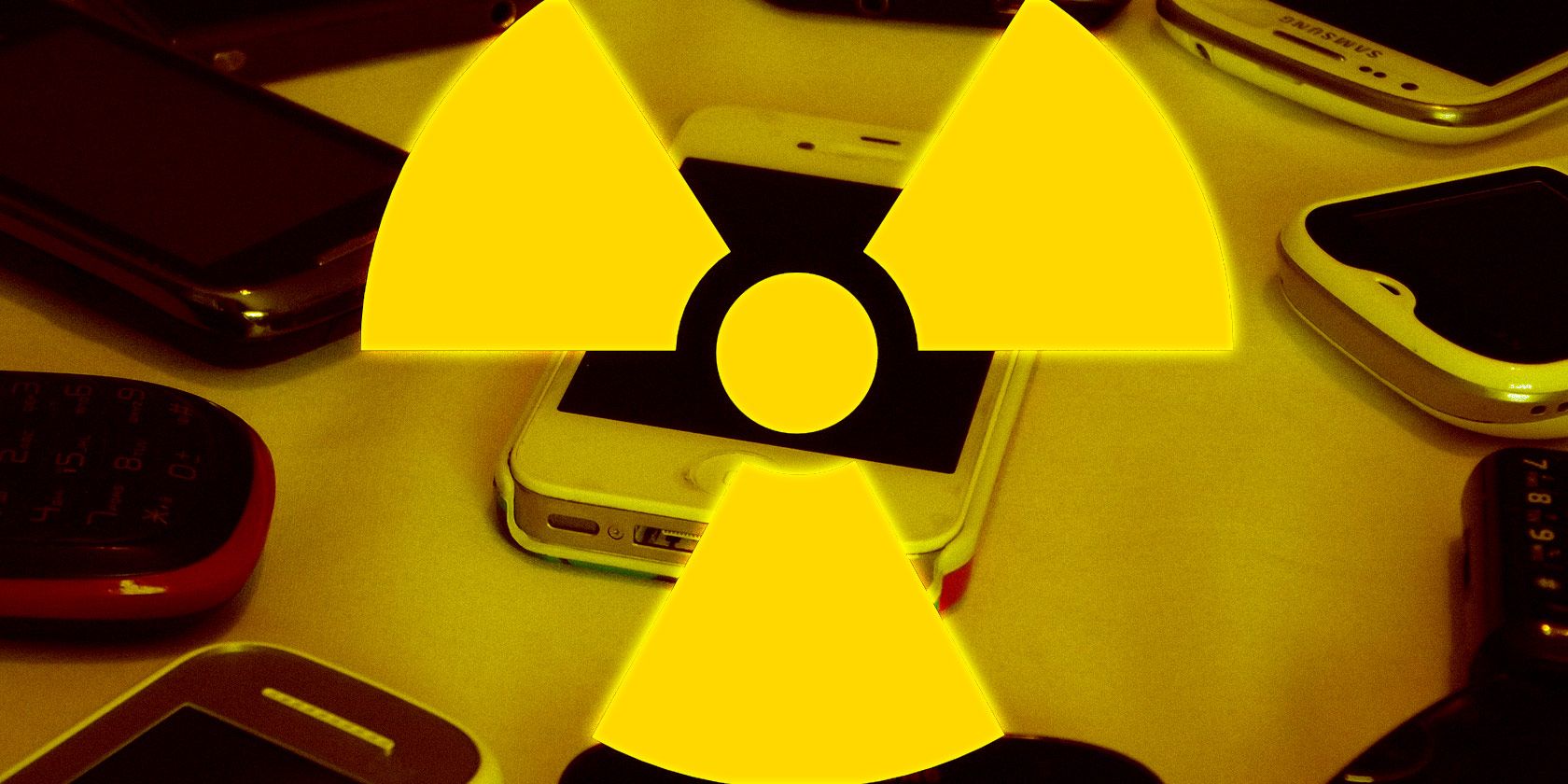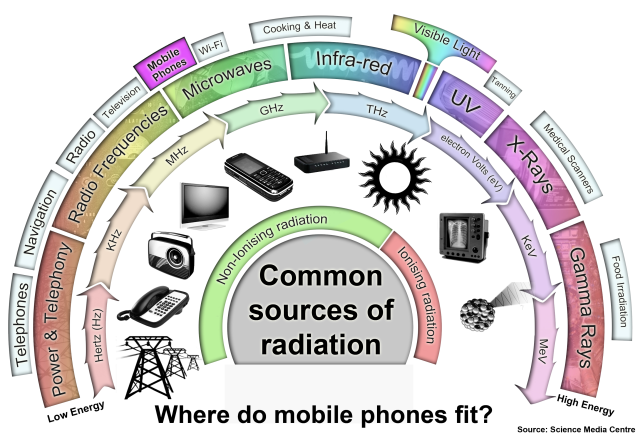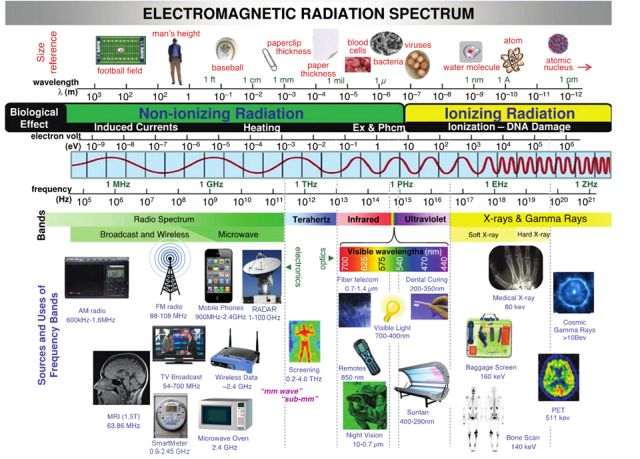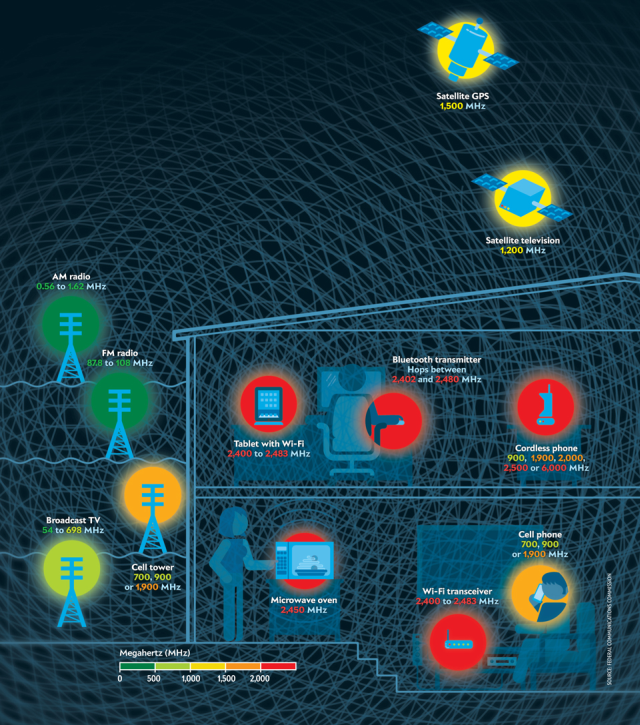Can cell phones cause cancer after all? The media certainly knows how to screw with facts. How does radiation emitted by electronics really affect your body? Well, calm down! The truth is, we know too little to make definite claims, but some evidence and a lot of common sense suggests that you'd better be safe than sorry.
Are All Types Of Radiation Dangerous?
No! We are subject to natural radiation all day long, whether we're indoors our outdoors. We are exposed to background radiation like terrestrial radiation, cosmic radiation, or Radon, a radioactive gas found predominantly in areas with natural occurrences of Radium. And then there is the sun, our most important natural source of radiation, i.e. sunlight. We are used to it, most of it is harmless, we even depend on it. What we have to be wary of is extensive exposure to radiation, whether it's natural or artificial.
What Is Electromagnetic Pollution?
Electromagnetic pollution is a buzzword describing the excessive exposure to electromagnetic radiation or electromagnetic fields (EMF) emitted by electronic devices like cell phones, cordless phones, WiFi routers or Bluetooth-enabled equipment.
The energy emitted by electronics is non-ionizing radiation, meaning it does not have the capability to break chemical bonds. In other words, it doesn't damage your DNA, which is a potential cause of cancer. While electromagnetic radiation cannot cause immediate damage, it does interact with our bodies, which can potentially lead to indirect damage, especially following long term exposure.
How Does Electromagnetic Radiation From Electronics Affect The Body?
Our bodies can absorb electromagnetic radiation as energy, meaning molecules in the tissue directly exposed to radiation get excited. In other words, they heat up. This is exactly what happens when we sunbathe. The molecules in our skin are excited by waves in the sunlight and thus sunshine feels warm on our skin.
Now, the heat caused by the non-ionizing spectrum of sunlight is considered harmless. Moreover, the energy emitted by electronic devices is magnitudes lower than that of the sun! Energy is directly proportional to the radiation's frequency. Ultraviolet light -- the kind that has a high potential to cause skin cancer -- has a frequency of around 10 to the power of 16, while low intensity microwaves found with cell phones have a radiation of around 10 to the power of 9. This alone should put you at ease -- but, not so fast.
During recent years, much attention has been given to the specific absorption rates (SAR) of cell phones and their effects on our health. SAR describes the amount of energy from radiation absorbed by the human body over a set amount of time. While manufacturers have to honor safety limits set by the FCC and many national governments, those values are somewhat arbitrary. We still don't understand enough about the potential effects of electromagnetic radiation, both in terms of its interaction with biological material and the effects of its increasing and cumulative use.
The fact is, we are increasingly subjected to artificial electromagnetic radiation. We bathe in EMFs all day long, artificial electromagnetic radiation is emitted by a growing number of devices, and our relationships with these devices becomes more and more intimate. There is no way anyone can be sure of the outcome.
Evidence For Health Hazardous Effects Of Electromagnetic Pollution
In 2011, wireless radiation was classified as a potential carcinogenic by the International Agency for Research on Cancer (IARC), an agency of the World Health Organization (WHO). This was in response to studies that indicated a potential correlation between cell phone radiation and cancer. While several scientific studies suggest a link between radiation and cancer, especially for long term user of cell phones, others dispute or relativize the link to cancer. Most of these studies are either flawed or outdated by now and thus, science remains inconclusive.
The way we use wireless technology today is radically different than how we used it a decade or two ago, when most of today's devices didn't even exist! It takes time to study long-term effects on the human body. Meanwhile, the use of technology -- think Google Glass or Smart Watches -- continues to evolve too quickly for mandatory long term scientific studies or regulatory agencies to keep up. I dare to say that this is an undisputable fact.
In the meantime, alarming reports remind us to be cautious, although studies by school kids should be taken with a grain of salt. Apparently, the report of cress seedlings dying when placed next to a WiFi router was based on an amateurish study that was biased and had other significant flaws. That doesn't mean the conclusion is false, it just means it can't be trusted.
Humans aren't cress seeds, but we do keep wireless devices close to our bodies. If this is done over a long period of time, it could be damaging to our health, as some cases suggest.
Ironically, when I searched for scientific studies on the relation between cell phones and occurrences of cancer, I found a publication that discussed the use of widespread mobile technology in preventive health care. The authors speculate that delivering health information via cell phones could aid cancer prevention. So in the end, technology might do us more good than bad.
How Can You Protect Yourself From Electromagnetic Pollution?
Artificial electromagnetic radiation from electronics is prevalent in our environment. At current rates and given you don't use electronic devices excessively, it is most likely harmless, at least for adults. However, if you have adopted habits that are potentially risky and experience symptoms that may be attributed to electromagnetic pollution, you can try some of the strategies below.
Mobile Phones
Avoid using your cell phone for calls when possible. Other times, keep calls short and use a headset. Avoid calls when the network signal is weak, as this is when your phone's radiation is the strongest. If possible, don't wear your phone close to your body or regularly switch where you keep it. Don't keep your phone close by when you sleep or set it to airplane mode. Not only will this decrease the radiation emitted by your cell phone and potentially improve your sleep -- if only for the lack of notifications -- it will also save battery. Finally, look for a cell phone with a low SAR rating when purchasing your next one.
Cordless Home Phones
Make sure your DECT cordless phone reduces its signal power when the handheld is in idle mode or rests in the base station. Use the phone close to its base station. When its time comes, replace it with a corded phone or one that has lower radiation levels.
WiFi and Bluetooth
The strength of these wireless signals drops quickly over relatively short distances and thus the energy that reaches your body is extremely weak. Moreover, WiFi energy is considered non-thermal, meaning it does not cause heating of tissue. So technically, you don't have to worry.
That said, children may be more vulnerable. If you are concerned, consider connecting to the Internet using an Ethernet cable, which would allow you to turn your wireless router off while it's not needed by mobile devices. If your router must be always-on, place it at the maximum distance from your desk or bed that still allows you to get a reasonably strong signal. Again, based on what we know today, WiFi signals are harmless and it's close to impossible to overdose on them.
Relax! Everything Will Be Fine
At this point, the science isn't clear. I dare to say that this is mostly due to the fuzzy field within which research presently operates. The intimate use of technology is a very new development and biological systems are rather rigid. Consequently, we won't see effects clearly for a long time, a phenomenon we know very well from climate change. By the time we can no longer deny the effects, the damage (if any!) is irreversible, at least for our children.
Our elders know that it's better to be safe than sorry; it's the precautionary principle we should all follow. Embrace technology, except don't do it literally. Use it in reasonable doses, with caution, teach your children responsible use of technology, and everyone will be fine. Cell phones and other electronics do not cause health issues, unless overdosed. What's far more damaging to your health is anxiety, so try to relax.
Image credits: Common Sources of Radiation via Science Media Centre, Electromagnetic Radiation Spectrum via Scientific American, Sources of Electromagnetic Radiation via Scientific American




